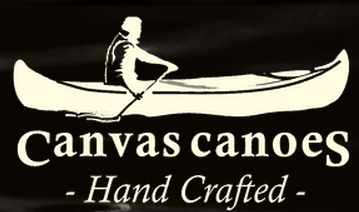Interview with a boat-builder: Canvas Canoes
This week, International Timber got together with Steven Hanton of Canvas Canoes, a bespoke canoe builder based in Scotland, to discuss how he’s bringing new life to this ancient craft.
When he’s not teaching survival skills in the wilds of Cumbria, Steven retires to his workshop near Edinburgh, where he lovingly constructs made-to-order wooden canoes.
How did you get into building canoes?
I actually work predominantly full-time as a wilderness skills and survival instructor and I’ve been doing that for ten years I do that in Cumbria all kinds of traditional outdoor skills and I build my first canoe about eight or ten years ago that was a cedar strip fibreglass canoe and I built it because I was getting into woodworking but I also had a background in wilderness travel so I wanted to build a canoe that I could then use to get into wilderness areas so I built that and it was a success, however I didn’t really enjoy working with the fibreglass because it’s a very bleak and intensive process so I went one stage back in the evolution of the canoe which is the canoes I build now which is a wooden canvas canoe with a cedar frame with a canvas skin.
I built that first one about five or six years ago and the work I do in Cumbria teaching wilderness skills is quite seasonal so in between jobs I get to build the canoes – it’s sort of winter pastime so it’s a small sort of part-time company.
I love woodwork and I love the wilderness basically.
Is there much demand for wooden canoes?
There’s not a huge demand, partly because the niche is small, because they’re wooden boats. The heritage of these canoes is that they’re from north America. So if you ask any [canoe users] in north America about wooden canvas canoes – everyone has heard of one or wants one. Whereas here we don’t have that heritage, so I have my work cut out convincing people that they’re one robust and two worth a purchase. So I wouldn’t say it’s a there’s a huge demand for them, but I don’t have all the time in the world to build them – it’s a part-time business anyway. So last year I built three, this year I’ll build one or maybe two. I don’t do many because it takes me so long to lake them it’s more of a labour of love.
How long does it take to build a wooden canoe?
Depending on trim, I would say anywhere from about 300 to 500 hours. It’s a lot of time and it’s a canoe, so there’s a limit to what most people will be prepared to spend on a canoe so you can’t really go charging astronomical fees for them.
How much do you charge for your canoes?
It’s about £4,000 for an average canoe. You’d probably get a fibreglass model for about £2,500 or £3,000. If it was a wooden hull, fibreglass skin, you’d be paying £2,500 but you can buy all plastic models for about £1,500 so that’s what I’m trying to compete with.
Do you use the canoes you make yourself?
All the time. I’ve paddled most of the major rivers in Scotland. I use it on the coast because it’s perfect functional at sea a lot around the west coast of Scotland. I’ve been down to Wales recently and of course Cumbria as well.
Why do you use cedar when building your canoes?
Cedar is unique among woods, because it does everything that you need it to do in a boat especially well. It’s superiorly rot resistant, so it’s just naturally rot resistant, so for a boat that spends a lot of time wet it’s fabulous for that. It’s also really, really light, [which is good for a canoe] as it has to be able to do two things – you have to be able to paddle it and you also have to be able to carry it.
So if you use other woods that are too heavy, then it doesn’t do one of those things very well. It’s also flexible, which is something you want in a wooden canoe – so when you bash into things there’s a little bit of give. It also steams fairly well, because all the frames within the guts of the canoe are actually steam bent, so it’s a wood that can get really hot and flexible when you steam it. It’s also available in good, long lengths, which is why I like western cedar.
What maintenance tips would you offer for wooden canoe owners?
[They use] an oil-based finish, so after the initial three-to-five coats of spar varnish every five or six years you want to give it a good coat of an oil based varnish.
Ideally you want to have little bits of canvas around that you can use for patches if you get a tear. An average canvas, depending on what weight you decide to go for with the boat, average use usually get worn after about 20 years. So you’re going to want to think about having the canvas replaced.
But all the hardwood bits, with a little bit of varnish and sanding every now and again, will last indefinitely.
What does the future hold for Canvas Canoes?
Just plodding away continuing to turn out boats. The more that I build, the more are being paddled around the UK and that’ll hopefully increase demand. I think I’m currently the only professional canoe builder active in the UK, so when you see a wooden canoe you probably know it’s a Canvas Canoes boat. I’d also like to increase the amount of different models that I offer to my repertoire.”
If you’d like to learn more about Steven and his work, you can check out the Canvas Canoes website or head over to his Facebook page.
And if you’re looking for cedar, or any type of wood, for your next boatbuilding project – be sure to check out our expansive product range today!


